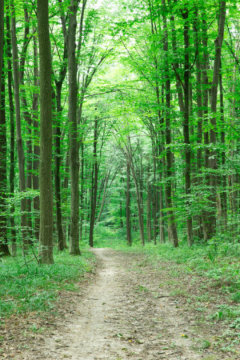World’s biggest terrestrial carbon sinks are found in young forests

More than half of the carbon sink in the world's forests is in areas where the trees are relatively young — under 140 years old — rather than in tropical rainforests, research at the University of Birmingham shows. These trees have typically 'regrown' on land previously used for agriculture, or cleared by fire or harvest and it is their young age that is one of the main drivers of this carbon uptake.
Forests are widely recognised as important carbon sinks — ecosystems capable of capturing and storing large amounts of carbon dioxide — but dense tropical forests, close to the equator have been assumed to be working the hardest to soak up these gases.
Researchers at the University of Birmingham have carried out fresh analysis of the global biosphere using a new combination of data and computer modelling in a new study published in the Proceedings of the National Academy of Sciences (PNAS). Drawing on data sets of forest age, they were able to show the amount of carbon uptake between 2001 and 2010 by old, established areas of forest.
They compared this with younger expanses of forest which are re-growing across areas that have formerly experienced human activities such as agriculture or logging or natural disturbances such as fire. Previously it had been thought that the carbon uptake by forests was overwhelmingly due to fertilisation of tree growth by increasing levels of carbon dioxide in the atmosphere.
For More: https://www.sciencedaily.com/releases/2019/02/190218153155.htm

